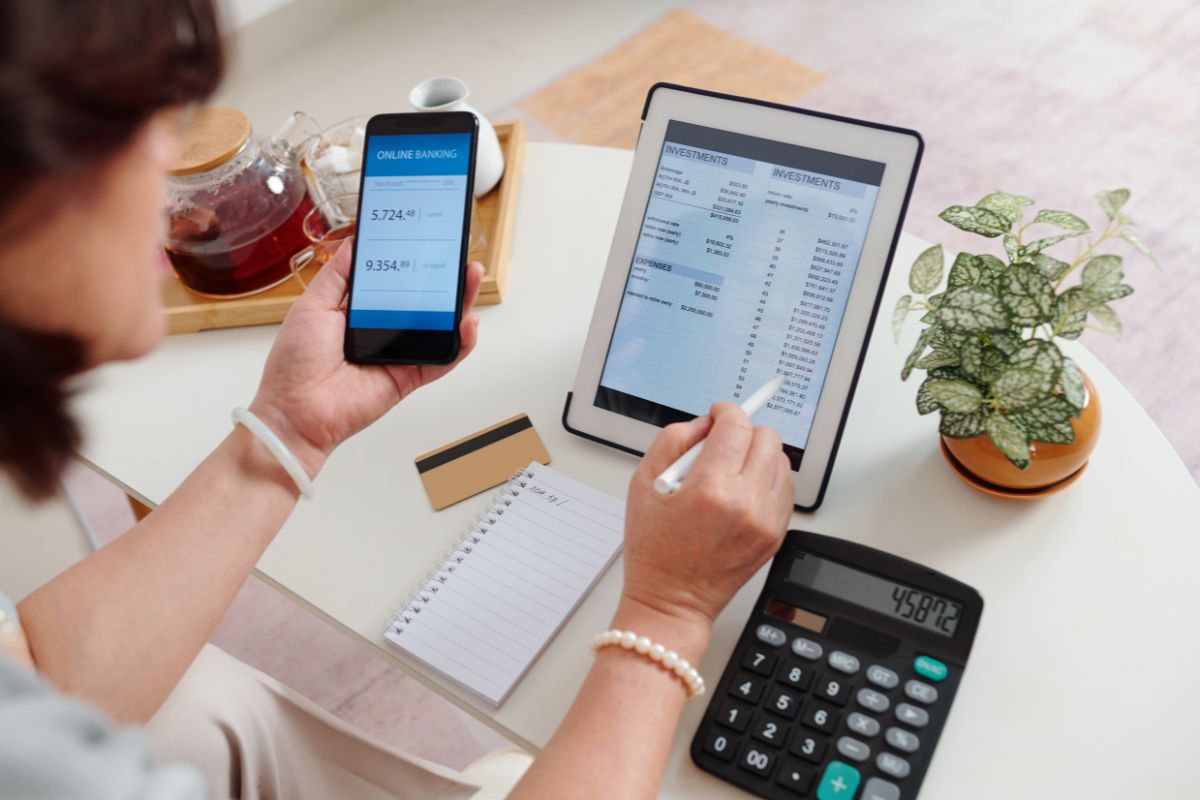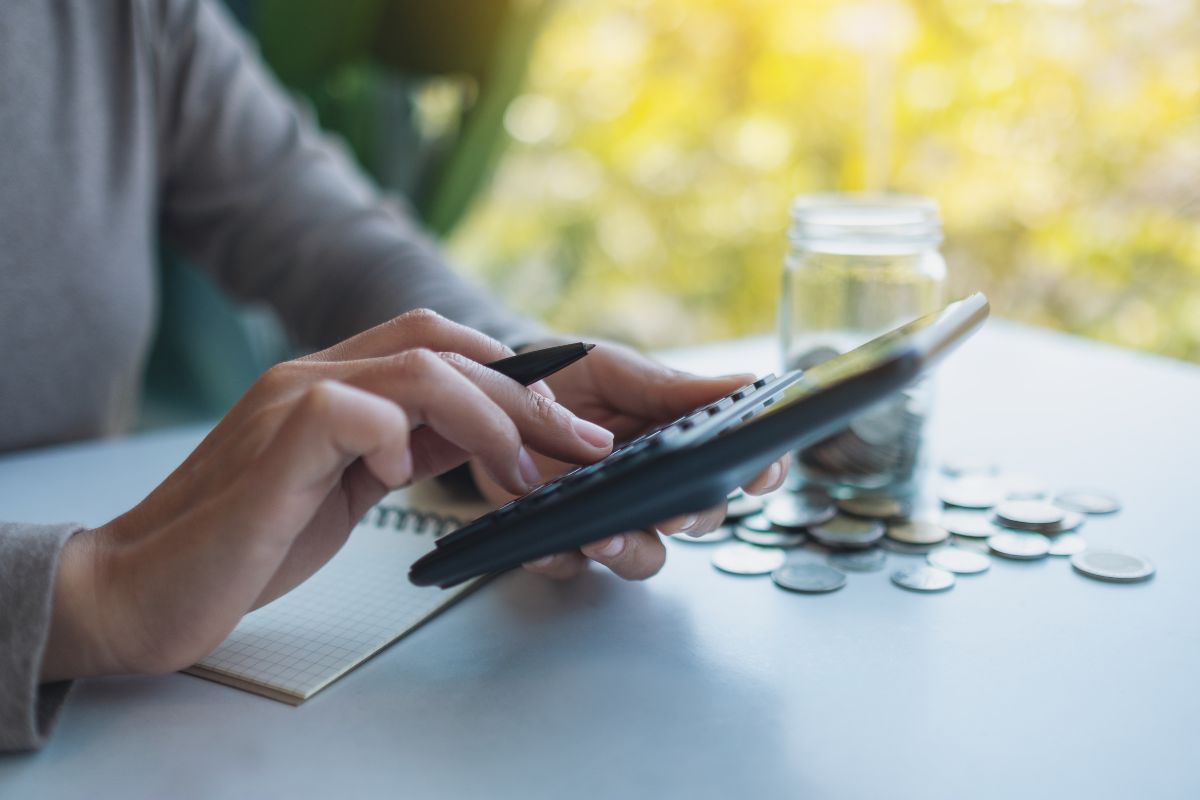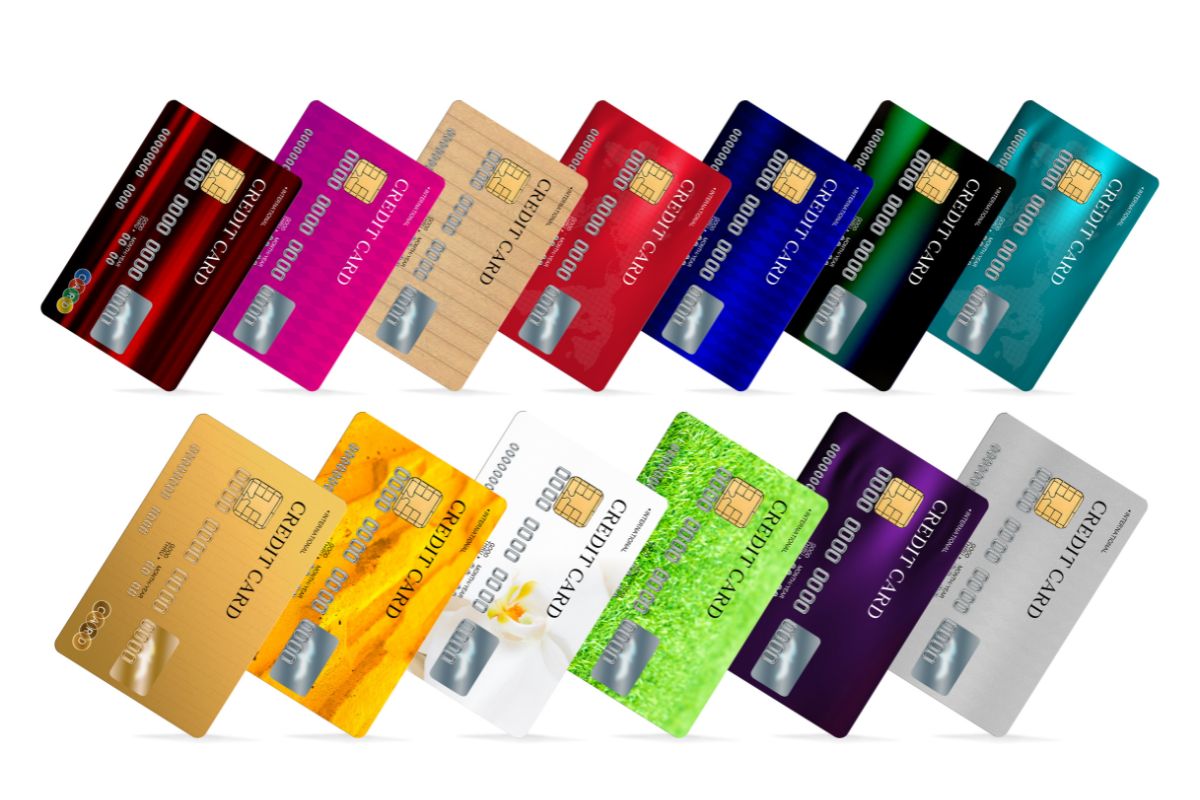Creating a strong emergency savings fund is key to financial security. It acts as a safety net against sudden costs like car fixes, medical bills, or losing your job. This fund keeps your finances stable and prevents you from getting into debt. We’ll guide you through the steps to set up and manage your emergency fund, keeping your financial health secure.
Usually, you should save enough for three to six months of expenses. First, add up your monthly bills like rent, utilities, food, and car payments. Then, multiply this total by the number of months you want to save for, usually three to six. Setting up automatic transfers from your checking to savings helps keep your savings steady. Also, using unexpected money like tax refunds or gifts for your emergency fund can quickly increase your savings.
Key Takeaways
- An emergency fund should cover three to six months’ worth of living expenses.
- Automating savings transfers from your checking account to your savings account builds consistency.
- Deposit unexpected windfalls, such as tax refunds, directly into your emergency fund.
- Avoid dipping into your emergency savings for non-essential expenses to maintain financial security.
- Money market accounts can offer higher interest rates than traditional savings accounts, making them a good option for emergency funds.
Understanding What an Emergency Fund Is
An emergency fund is a financial safety net. It helps you get through unexpected disruptions. It’s a cash reserve for financial emergencies. Having this fund means you have money set aside for unplanned expenses. This lets you handle tough times without borrowing or using your long-term savings.
Definition and Purpose
An emergency fund is a savings for unplanned expenses. Its main goal is to provide quick cash during financial troubles. This way, you can pay for necessities without touching retirement savings or getting into debt.
Experts suggest saving enough for three to six months of living costs. Suze Orman recommends saving up to eight months’ expenses for extra safety.
Common Uses for Emergency Funds
Emergency funds are useful for many situations, big and small. Here are some examples:
- Sudden medical bills not covered by insurance
- Car repairs or buying a new essential vehicle
- Home repairs from unexpected damage
- Job loss or sudden drop in income
- Quick travel for family emergencies
Having money saved for emergencies helps you pay for unexpected bills. This way, you avoid high-interest credit cards or loans. Saving for emergencies also gives you peace of mind and helps with long-term financial health. Using automatic savings and employer programs can help you save faster.
Why You Need an Emergency Savings Fund

Having an emergency savings fund is key to your financial security. It’s like a safety net for unexpected costs. This fund helps you handle life’s surprises without financial stress.
Protecting Against Financial Shocks
Keeping an emergency fund protects you from sudden financial hits. These can be medical bills, home repairs, or car issues. It’s wise to save three to six months of expenses. For example, if you spend $5,000 a month, aim for $15,000 to $30,000 saved.
Vanguard suggests keeping part of this fund in easy-to-access cash. This way, you can quickly get money when you need it.
Avoiding Debt and Its Long-Term Effects
An emergency fund helps you avoid debt. Without it, you might turn to high-interest credit cards or loans. This can lead to a cycle of debt that’s hard to break.
Start by saving half a month’s expenses or $2,000, whichever is more. This helps you cover sudden costs and keeps you financially safe.
It’s good to keep some of your fund in easy cash for quick needs. But, put the rest in investments like a taxable brokerage or Roth IRA for long-term goals. This way, your savings can grow and keep up with inflation. Plus, Roth IRA withdrawals are tax-free if you wait until you’re over 59½ and have had the account for five years.
| Type of Expense | Recommended Savings |
|---|---|
| Spending Shocks | $2,500 to $2,000 (whichever is greater) |
| Income Shocks | 3 to 6 months of living expenses ($15,000 to $30,000 for $5,000 monthly expenses) |
Determining How Much You Need in Your Fund
Creating a solid emergency fund is key to financial security. Figuring out the right amount for your emergency fund means doing a detailed financial assessment of your situation. Look at past unplanned expenses and set realistic savings goals.
Assessing Past Unplanned Expenses
Start by looking at your financial history, focusing on unplanned expenses. This helps you see what emergencies you might face and their costs. Common unexpected costs include car repairs, medical bills, or home maintenance.
Review your financial records from the last year or two to spot sudden, high-cost incidents. This will help you figure out how much you need in your emergency fund.
Setting a Savings Goal
Experts suggest saving enough to cover three to six months of living expenses. This amount can help you weather job loss, medical emergencies, or other unexpected events. To set your goal, add up your monthly costs like rent, utilities, food, and transportation.
Then, multiply that total by three to six, based on how much you can handle and your risk level. Setting smaller savings goals can make it easier. Begin with saving $500 for immediate expenses. Aim to save $10 each week to reach $500 in a year.
Recommended Savings Goals and Strategies:
| Target | Savings Strategy |
|---|---|
| $500 initial fund | Save $10 weekly |
| 3-6 months’ expenses | Automate monthly transfers |
Choosing the right place for your emergency fund is important. High-yield savings accounts offer good interest rates and FDIC insurance up to $250,000. Money market accounts also provide competitive rates and easy access to your money. But, CDs are not a good choice because of penalties for early withdrawal.
Strategies to Build Your Emergency Fund
Building a strong emergency fund needs a mix of strategies. By using smart savings tips, you can make sure your fund covers unexpected costs. Here are ways to build your emergency fund step by step.
Creating a Savings Habit
Starting a regular savings habit is key to a good emergency fund. Being consistent is important. You could start by saving a little each day, like $5, which adds up to $1,825 a year. Celebrating your savings wins can help keep you motivated.
Managing Cash Flow
Managing your money well is key to growing your emergency fund. Start by looking at your monthly spending and see where you can cut back. Cutting non-essential spending can give you more money for savings. A good budget should include money for housing, transport, and food, which take up 62% of your income. This way, you can save a part of your income.
Taking Advantage of One-Time Opportunities
Windfalls like tax refunds and bonuses can really help your emergency fund. Instead of spending these extra amounts, put them into savings. This can speed up your savings goals.
Saving Automatically
Automating your savings makes it easier to build your emergency fund. You can set up automatic transfers from your checking to a savings account. This way, you save money without having to think about it. It helps you stay disciplined and lets your savings grow without any hassle.
Saving Through Work
Many jobs offer savings programs. Think about putting some of your paycheck into a savings account. Since most people get paid through direct deposit, this can make saving part of your routine. You might also look into financial wellness programs and savings incentives at work.
| Strategy | Details | Impact |
|---|---|---|
| Creating a Savings Habit | Consistently saving small amounts | Builds a substantial fund over time |
| Managing Cash Flow | Cutting non-essential expenses | Frees up more resources for savings |
| Taking Advantage of One-Time Opportunities | Directing windfalls to savings | Boosts your fund with lump-sum additions |
| Saving Automatically | Setting up automatic transfers | Makes savings consistent and hands-off |
| Saving Through Work | Allocating a part of paycheck to savings | Integrates saving seamlessly into earnings |
Using these strategies can help you build a strong emergency fund. This gives you financial security and peace of mind.
Where to Keep Your Emergency Fund

Finding the right spot for your emergency fund is key for keeping your savings safe and ready when you need it. This guide will look at different places to keep your money, like bank accounts, prepaid cards, and cash. This will help you pick the best option for you.
Bank or Credit Union Accounts
Bank and credit union accounts are top choices for emergency funds. They offer various accounts, from basic to high-yield savings. High-yield accounts at online banks can earn over 2.00% APY, making them a good choice for growing your fund. But, remember, you can only make six withdrawals or transfers from money market accounts per month.
- Regular Savings Accounts: Easy to open and manage but may offer lower interest rates.
- High-Yield Savings Accounts: Higher returns, especially with online banks, often exceeding the January 2024 inflation rate of 3.1%.
- Money Market Accounts: Similar to savings accounts with potentially higher interest rates but limited withdrawals.
It’s important to keep your emergency savings in a separate account. This helps avoid using it for other things and makes sure it’s there when you need it.
Prepaid Card Options
Prepaid cards are another way to store emergency funds. You can load them with cash and use them when you need money fast. They’re convenient but may have fees and don’t earn interest like savings accounts do.
- Convenience: Easy to carry and use for emergency expenses.
- No Credit Check: Useful if you have a less-than-perfect credit score.
- Fees: Be aware of potential loading fees, maintenance fees, and transaction fees.
Cash on Hand Considerations
Keeping some cash at home can be handy for emergencies when you can’t use electronic funds. But, it’s risky, like getting stolen or lost. It’s best to keep a little cash for now and put most of your emergency fund in safer places.
- Immediate Accessibility: Useful for emergencies where electronic transactions are unavailable.
- Risk of Theft: Keep cash in a secure, hidden location to minimize risk.
- Inflation Impact: Cash does not earn interest, so its value may decrease over time.
| Option | Pros | Cons |
|---|---|---|
| Bank/Credit Union Accounts | Secure, interest-earning, easy transfers | Withdrawal limits |
| Prepaid Cards | Convenient, no credit check needed | Fees, no interest earnings |
| Cash on Hand | Immediate access, no fees | Theft risk, no interest earnings |
Choosing where to keep your emergency fund means balancing how easy it is to get to, how safe it is, and how it can grow. By looking at these options, you can pick the best one for you. This way, you’ll be ready for any crisis.
When to Use Your Emergency Fund
It’s important to know when to use your emergency fund. This keeps your savings safe for real emergencies. Following guidelines helps you use it right and avoid misuse.
Setting Guidelines for Usage
Having clear rules for using your fund is key. Emergencies include unexpected medical bills, sudden car or home repairs, and losing your main income. With 66% worried about covering bills without their main income, clear rules help save your emergency fund for true emergencies.
Avoiding Non-Emergency Use
It’s easy to use your savings for things you don’t really need. But it’s crucial to avoid this to keep your finances in check. With 36% of Americans having more credit card debt than emergency savings, it’s vital to know the difference between needs and wants. Using savings for luxuries or vacations can risk your financial safety.
Replenishing the Fund After Use
After using your emergency fund, it’s important to start saving again. Even small weekly or bi-weekly contributions can help. This is key, as 56% of working Americans regularly add to their emergency savings. Here’s a table with steps to quickly rebuild your emergency fund:
| Action | Impact |
|---|---|
| Automate Savings | Consistent contributions without manual interventions. |
| Utilize Gig Work or Side Hustles | Additional income to quickly boost your fund. |
| Review and Adjust Budget | Free up extra cash by reducing non-essential expenses. |
| Use Tax Refunds or Bonuses | Immediate and sizeable contributions to your savings. |
| Reallocate Unused Funds | Redirect unused portions of other savings or investment returns. |
Following these steps helps you keep your emergency fund safe. This protects you from financial surprises.
Tips for Maintaining Your Emergency Fund

Keeping your emergency fund strong is key to financial resilience. Only 44% of Americans can cover a $1,000 emergency from savings, a 2022 Bankrate survey found. With inflation rising, it’s vital to keep building and keeping your fund up.
It’s smart to keep your emergency money in separate accounts linked to your checking. This way, you can easily get to it but won’t spend it on things you don’t need. Here are tips to keep and use your emergency fund well:
- Set Realistic Goals: Try to save enough for three to six months of expenses. Start small, like saving for one month, to make it feel easier.
- Automate Your Savings: Set up automatic transfers to save money easily. Even saving $100 a month can help build your fund over time.
- Keep It Accessible Yet Separate: Use special accounts to avoid spending your emergency money. But make sure you can get to it when you need to.
Let’s compare saving in a regular account versus a money market fund:
| Feature | Savings Account | Money Market Fund |
|---|---|---|
| Annual Yield | Lower (around 0.01%-0.06%) | Higher (can vary, check current rates) |
| Minimum Deposit/Balance | Usually none | Often required |
| Liquidity | Highly liquid | Moderate to highly liquid |
| Risk Level | Low risk | Moderate risk (value can fluctuate) |
Being consistent is crucial for savings persistence. Check your finances often and adjust your savings to fit your budget. It’s about making steady progress, not big changes. Talk to financial experts like those at Morgan Stanley for advice on managing your emergency fund.
Stay away from common mistakes like spending more or getting new credit, which can hurt your savings. Once you’ve saved a lot, think about putting extra money into accounts that earn more, balancing your needs for now and later.
Having a solid emergency fund boosts your financial resilience. It gives you peace of mind during uncertain times.
Psychological Strategies for Saving
Overcoming the psychological barriers to saving can be tough, but it’s key for a strong emergency fund. We’ll look at strategies like setting smaller goals and starting with small, regular savings.
Setting Smaller, Achievable Goals
Setting small, achievable saving goals is a great way to build a saving habit. Don’t try to save six months’ expenses right away. Start with saving for one month, then increase it to three months, and finally aim for six months. This makes the goal feel less overwhelming and more reachable.
Start with Small, Regular Contributions
Starting with small, regular savings can really help you succeed. Being consistent is crucial, and even small amounts saved each month add up. Consider setting up automatic savings to keep contributing regularly. Many banks offer services that move money from checking to savings automatically, helping your savings grow without you having to think about it.
By using these strategies, you’ll improve your saving mindset. Setting smaller goals and saving regularly makes reaching your savings goals easy and satisfying.
Common Mistakes to Avoid
Building an emergency fund needs careful planning and sticking to financial discipline. Many pitfalls can slow down your savings if you’re not careful. Let’s look at two big mistakes to avoid: spending more each month and getting new credit cards.
Increasing Monthly Spending
One big mistake is spending more as you save. It might seem okay to buy new things with your savings growing. But, this can hurt your financial future. About 60% of Americans can’t cover a $1,000 emergency, showing how crucial it is to be careful.
Stick to a budget and pay for must-haves like your home, utilities, and insurance first. Don’t let your spending grow with your savings. This way, your emergency fund will keep getting stronger.
Opening New Credit Cards

Another big mistake is getting new credit cards while saving. Managing your credit is key; too much debt can slow down your savings. Carrying a $3,000 balance on a card with 17% interest means paying $1,530 just in interest.
This eats into your savings and makes things harder financially. Use your emergency fund for real emergencies, not credit card bills. Focus on saving and use credit cards wisely to avoid extra debt.
By avoiding these mistakes, you can improve your saving and build a strong financial safety net. Stay disciplined, put needs before wants, and make smart financial choices. This way, your emergency fund will be there when you need it.










